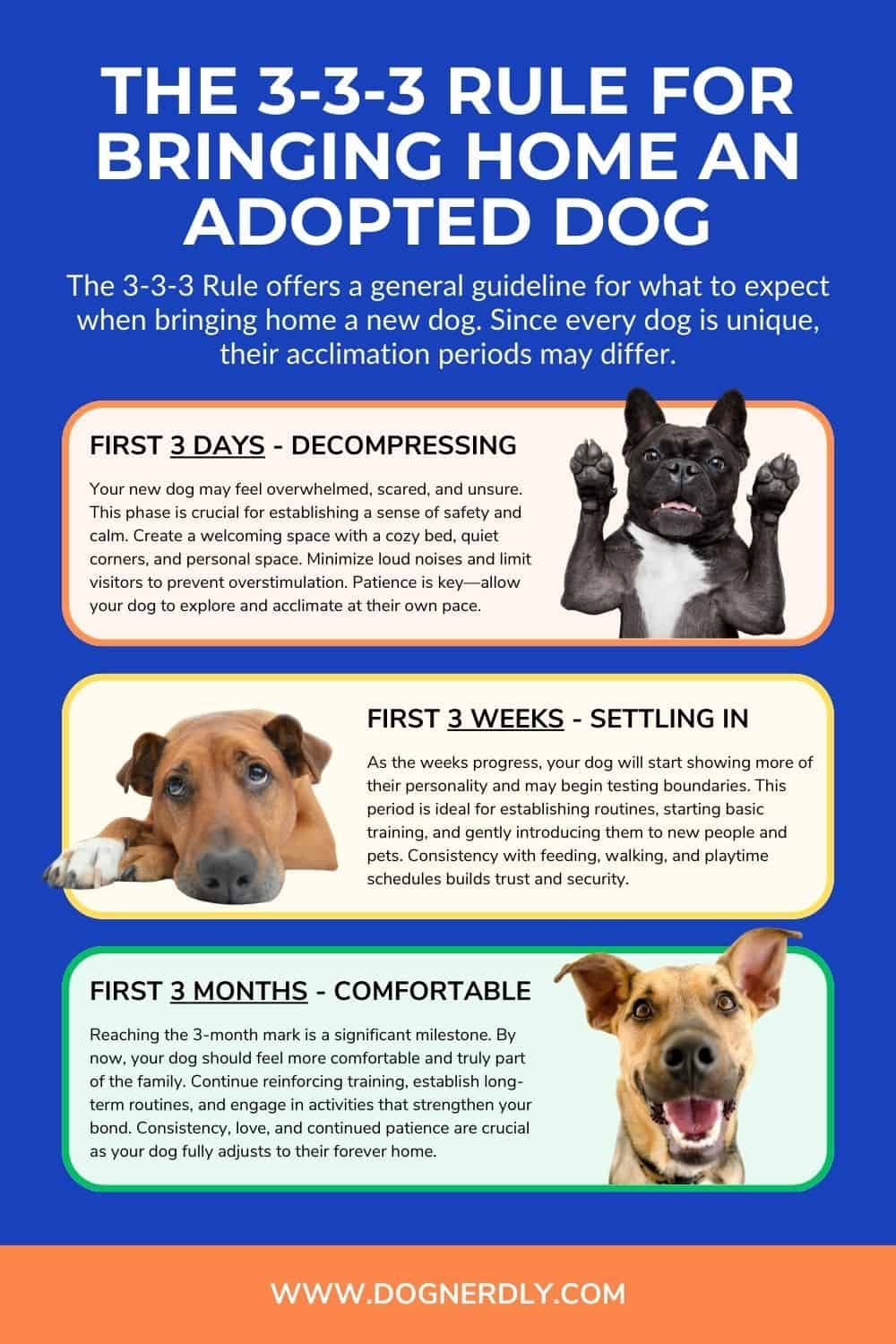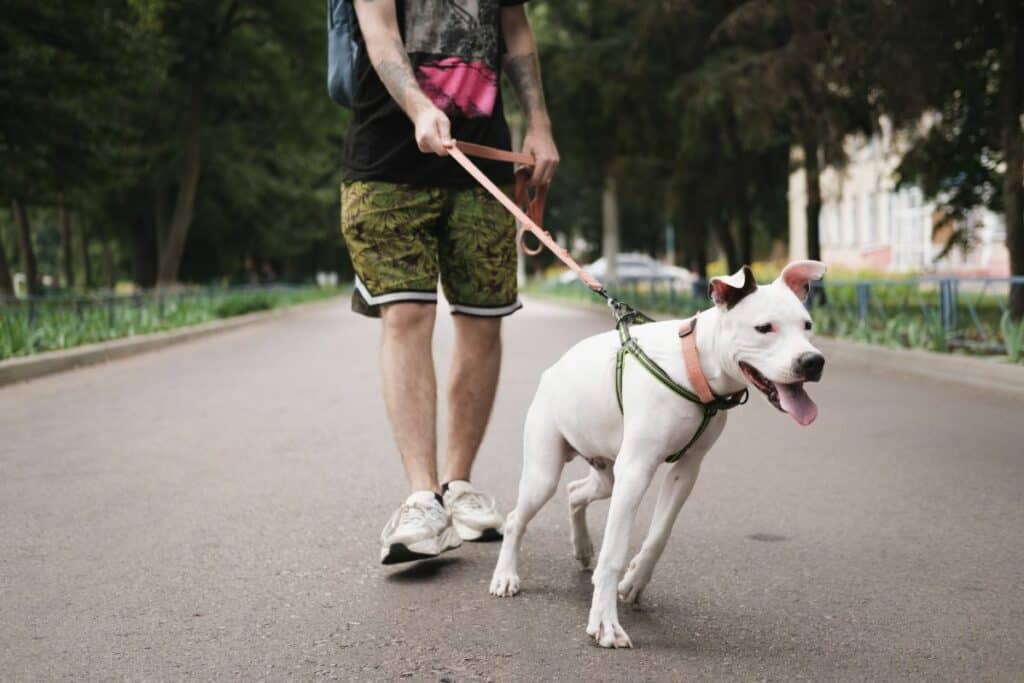The 3-3-3 Rule offers a vital guideline for seamlessly introducing a newly adopted dog to your home, marking the start of an incredible journey together. Refer to this guide as you plan for your new dog, making sure to have patience along the way.
What is the 3-3-3 Rule for Dogs?
Adopting a dog is an adventure filled with joy, challenges, and countless learning experiences. Particularly with rescue dogs, the transition to a new environment can be daunting. That’s where the 3-3-3 Rule comes into play—a simple yet profound guideline that helps new pet owners understand what to expect during the first 3 days, 3 weeks, and 3 months of bringing their new companion home. This article delves into each stage of the 3-3-3 Rule, offering insights and practical tips to ensure a smooth adjustment period for both you and your furry friend.
Why the 3-3-3 Rule is Important
Giving your dog ample time to settle into their new environment is not just beneficial; it's essential for their emotional well-being and your budding relationship. This section explores the importance of patience and understanding during your dog's adjustment period.
- Creating a Sense of Security: For a rescue dog, the world is a patchwork of past experiences, and not all of them are pleasant. Moving to a new home can be an overwhelming experience, filled with unfamiliar sights, sounds, and smells. By allowing your dog time to settle in, you're providing them with the much-needed space to feel safe and secure. A secure dog is more likely to show their true personality, build confidence, and form a deep, trusting bond with you.
- Reducing Stress and Anxiety: Stress and anxiety can manifest in various ways in dogs, including behavioral issues, health problems, and difficulty in learning new skills or routines. By giving your dog time to adjust at their own pace, you're helping to minimize these stressors, creating a calm and stable environment where they can thrive.
- Building a Lasting Bond: The initial adjustment period is a critical time for building a lasting bond with your new companion. Rushing this process can lead to misunderstandings and setbacks in your relationship. By being patient and giving your dog the time they need to settle in, you're laying the foundation for a strong, mutually respectful relationship.
- Facilitating Better Behavior: Dogs, much like humans, need time to understand and adapt to new rules and routines. Expecting immediate obedience or perfect behavior from a dog that's still adjusting to their new surroundings is unrealistic and counterproductive. Allowing your dog ample time to settle in helps them to develop good habits and adapt to your household's routines at a comfortable pace, resulting in better behavior and easier training sessions.
- Ensuring a Smooth Transition for Everyone: Finally, giving your dog time to adjust is not only beneficial for them but for everyone in the household. It allows all family members to gradually get to know the new addition, understand their needs, and adjust their own routines and behaviors accordingly. A smooth transition period helps prevent conflicts, reduces stress for both humans and pets, and sets the stage for a harmonious living situation.
The 3-3-3 Rule Explained
The First 3 Days: Initial Adjustment
In the initial 3 days, your new dog may feel overwhelmed, scared, and unsure. This phase is crucial for establishing a sense of safety and calm. Create a welcoming space with a cozy bed, quiet corners, and personal space. Minimize loud noises and limit visitors to prevent overstimulation. Patience is key—allow your dog to explore and acclimate at their own pace.
The First 3 Weeks: Settling In
As the weeks progress, your rescue dog will start showing more of their personality and may begin testing boundaries. This period is ideal for establishing routines, starting basic training, and gently introducing them to new people and pets. Consistency with feeding, walking, and playtime schedules builds trust and security. Additionally, begin basic skills and manners training to enhance your communication and bond.
The First 3 Months: Feeling at Home
Reaching the 3-month mark is a significant milestone. By now, your dog should feel more comfortable and truly part of the family. Continue reinforcing training, establish long-term routines, and engage in activities that strengthen your bond. Consistency, love, and continued patience are crucial as your dog fully adjusts to their forever home.

Get the Free Infographic!
Download and print off your own version of our 3-3-3 rule infographic so it's front and center in your mind as you start your journey with your new companion. Ensure you have realistic expectations for the first 3 months.
By submitting, you permit DogNerdly to send you promotional materials via email.
Considering the Dog's Background
Understanding your rescue dog's past is vital in navigating their adjustment period. Traumatic experiences, lack of socialization, or previous neglect can influence their behavior and needs. Be especially patient and observant, adjusting your approach based on your dog's comfort and reactions. In some cases, consulting with a professional behaviorist can provide personalized strategies to address specific challenges.
Preparing Your Home for a Rescue Dog
Before your new companion arrives, prepare your home to ensure a smooth transition. Dog-proof your space, removing hazardous items and securing trash cans and toxic plants. Establish a quiet, comfortable area just for them, equipped with a bed, toys, and water. Having all necessary supplies on hand, including food, a leash, and grooming tools, sets the stage for a positive first impression.
Building Confidence and Trust
Building confidence in your rescue dog is a gradual process. Use positive reinforcement to encourage exploration and new experiences. Treats, praise, and gentle encouragement for positive behavior help foster confidence. Be patient and consistent, allowing your dog to set the pace for learning and socialization.
Troubleshooting Common Challenges
Adopting a rescue dog can come with unexpected challenges, from housebreaking issues to anxiety. Stay calm and consistent, using positive reinforcement to address undesirable behaviors. If you encounter persistent problems, don't hesitate to seek advice from veterinarians or professional trainers. Remember, setbacks are a normal part of the adjustment process.
Frequently Asked Questions
Every dog is unique, and some may need more time to adjust. Be patient and continue providing support and consistency. If you're concerned about your dog's progress, consult with a veterinarian or a professional trainer for personalized advice.
Introduce your pets gradually, in controlled, neutral environments. Monitor their interactions closely and give each pet plenty of individual attention. Ensuring all animals feel secure and valued in their shared home is key to a harmonious household.
Signs of comfort include a relaxed posture, playful behavior, and a willingness to explore. You'll also notice your dog seeking affection and responding to routines, signaling they feel safe and part of the family.
Start with short, positive training and socialization sessions, gradually increasing the duration as your dog becomes more comfortable. Respect their need for space and retreats, and use treats and praise to make training a positive experience.
While the 3-3-3 rule is primarily designed for adult rescue dogs, the principles of patience, routine, and gradual socialization also apply to puppies. Adjust your expectations and training methods based on the age and individual needs of your dog.
Key Takeaways
The 3-3-3 Rule offers a foundational guideline for integrating a new rescue dog into your life. Understanding and patience are key to navigating the adjustment period, ensuring your rescue dog feels loved, secure, and confident in their new home. Embrace this journey with an open heart, and you'll build a deep, rewarding bond that lasts a lifetime.

Joseph Schifano is the President of The Academy of Pet Careers and Founder of DogNerdly.
With over 20 years of professional pet experience, Joseph got his start as an owner/operator of a 7-figure, all-inclusive pet care business. From there, he purchased The Academy of Pet Careers with a hopes of improving the quality of care provided by industry professionals. This role allowed Joseph to rub shoulders with some of the biggest names in the industry, and gain knowledge in every aspect of pet care.
After witnessing the popularity of social media influencers and the amount of misinformation being taught to pet parents, Joseph decided to create DogNerdly. The goal was to provide science-backed education for the average dog nerd in order to create a world where dogs and humans can live a more harmonious and empowered lifestyle.




